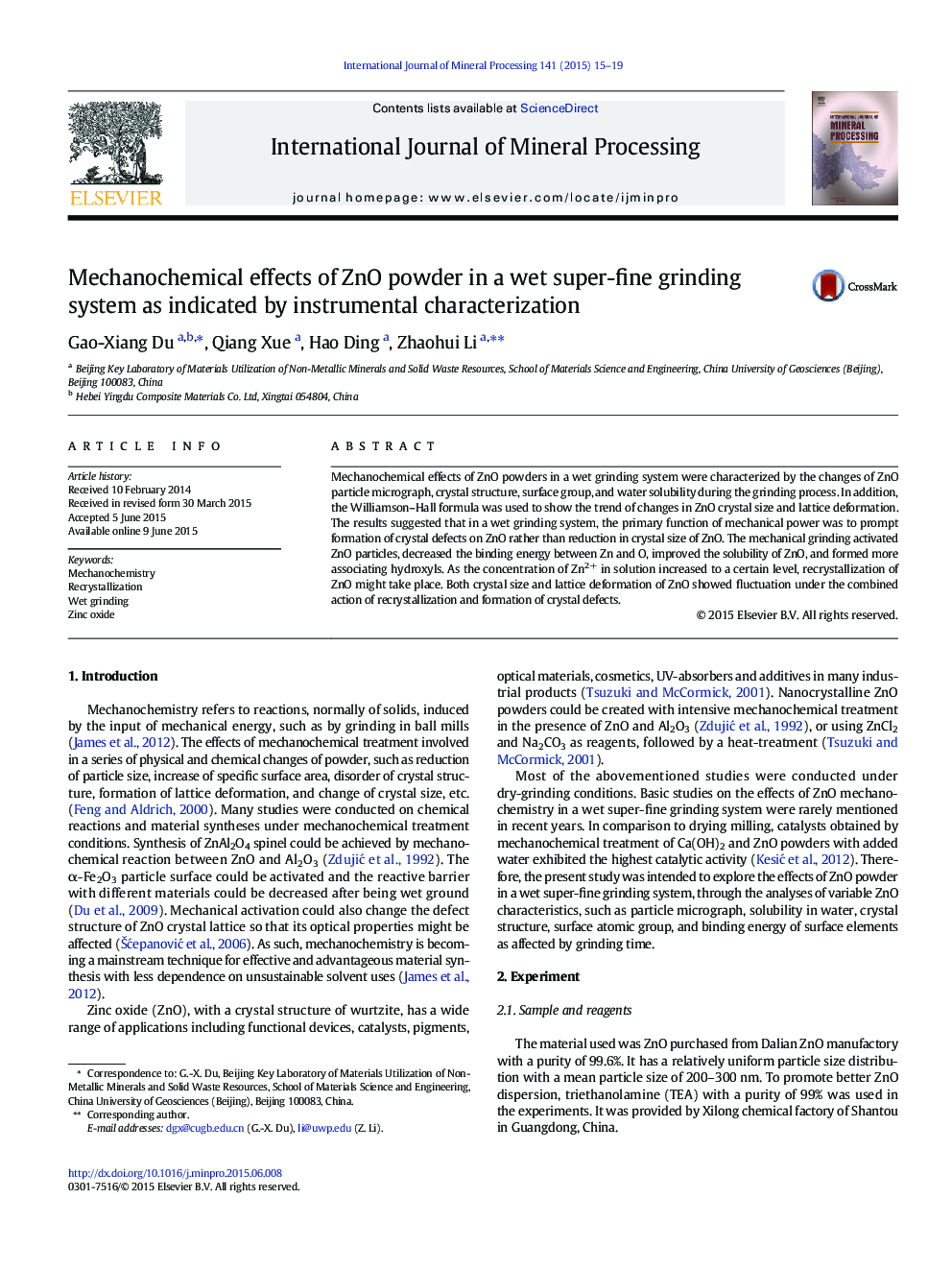| Article ID | Journal | Published Year | Pages | File Type |
|---|---|---|---|---|
| 213859 | International Journal of Mineral Processing | 2015 | 5 Pages |
•Mechano-chemical effects of ZnO powder in the wet super-fine grinding system studied.•Primary function of mechanical power was to prompt ZnO to form crystal defects.•Binding energy between Zn and O decreased while the solubility of ZnO increased.•After grinding more associating hydroxyls formed as revealed by XPS analyses.
Mechanochemical effects of ZnO powders in a wet grinding system were characterized by the changes of ZnO particle micrograph, crystal structure, surface group, and water solubility during the grinding process. In addition, the Williamson–Hall formula was used to show the trend of changes in ZnO crystal size and lattice deformation. The results suggested that in a wet grinding system, the primary function of mechanical power was to prompt formation of crystal defects on ZnO rather than reduction in crystal size of ZnO. The mechanical grinding activated ZnO particles, decreased the binding energy between Zn and O, improved the solubility of ZnO, and formed more associating hydroxyls. As the concentration of Zn2+ in solution increased to a certain level, recrystallization of ZnO might take place. Both crystal size and lattice deformation of ZnO showed fluctuation under the combined action of recrystallization and formation of crystal defects.
